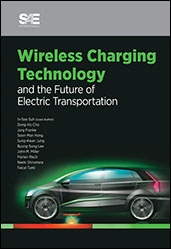Book

Wireless Charging Technology and The Future of Electric Transportation
2015-06-08
Around the world, the major automakers are developing their strategies for conductive and wireless charging technologies, with concerted efforts to establish technical standards on wireless electric vehicle charging, mainly focused on the safety considerations and inter-operability. Wireless Charging Technology and the Future of Electric Transportation covers the current status of wireless power transfer (WPT) technology and its potential applications to the future road and rail transportation systems. Focusing on the applications of WPT technology to electric vehicle charging and the future green transportation field, Wireless Charging Technology and the Future of Electric Transportation was written collaboratively by nine experts in the field, led by Dr. In-Soo Suh, a professor and researcher from the Korean Advanced Institute of Technology (KAIST).
